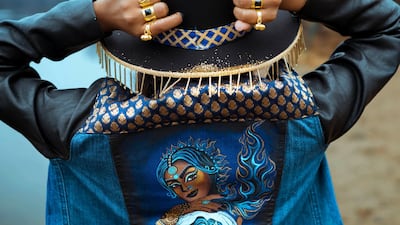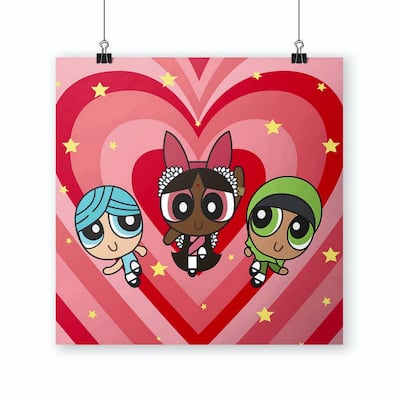For many South Asian immigrants and their children, identity is a multifaceted question wrapped up in two worlds: the traditions of the home country of their parents and the culture and society they are growing up in. Invariably, their personalities and even their professions are influenced by the balance they seek between their daily experiences and their ethnic roots.
Many immigrant Indians in Canada, the US and Europe have embraced their “desi-ness” and the milieu they have been thrust into, and combined their influences to create art, design or fashion businesses. The more successful of these endeavours often draw on the best of both worlds; they help their founders celebrate their multicultural reality, honour their heritage and create their own identities.
Not Sari by Pranavi Suthagar
Tamil designer Pranavi Suthagar, 25, from Toronto, uses design as a medium to express her bicultural identity. In 2017, she launched the label Not Sari (a play on the phrase "sorry, not sorry") in an attempt to "decode the brown experience one illustration at a time". Suthagar creates clothes and bags emblazoned with pithy phrases such as "I got it from my amma" and "Biryani babe".
Elsewhere, cushion covers come embroidered with traditional mirror glass kolam designs; badges are fashioned into steaming cups of chai; and a poster introduces a dark-skinned Powerpuff girl to a reworked illustration of the famed trio.
“My collections are inspired by my identity as a Tamil woman, born and raised in Canada. I use a combination of nostalgia and revealing untold truths surrounding the first-generation experience, as well as using shared experiences among my South Asian friends for inspiration,” Suthagar says.
Agni by Neha Kapil
Suthagar's neighbour in a sense, Neha Kapil, 27, is a second-generation Indian-American designer who was brought up in Minneapolis in the US. She launched her clothing line Agni in 2017, and is known for her pop-culture-meets-street-flair aesthetic.
Strong modern-day women as well as goddesses from India’s rich mythological fables dominate Kapil’s creations. They can be seen brandishing swords, riding on the backs of lions and even posing with the cut heads of demons.
“Agni means fire in Hindi, and my motto is ‘fire to be fearless’, a reminder to be loud and proud when it comes to an expression of culture and staying true to oneself,” says Kapil. “The physical properties of fire can be dangerous, but just as much as it possesses the ability to burn, it also brings light to dark spaces.
“My aim is to bring the intricacies and details of South Asian culture and community to the world and prove that representation matters. I’m proud to take our stories and fuse them into something contemporary yet still true to my roots.
"There's this notion that as minorities we should 'whitewash' our brands to be successful, but it's my goal to prove that there's a place for South Asians to succeed in fashion – and be unapologetically brown – especially when it comes to streetwear." Kapil's dream is to "see a day where South Asian art will be accepted by mainstream audiences in the same way we love brands like adidas and Supreme".
Agni’s latest collection is an eco-friendly line that allows customers to send in vintage pieces to be upcycled into sustainable creations using silkscreening and hand-printing. “I hope to use this venture as a way to promote zero waste and join the slow fashion movement,” she says.
Indo-Danish designs by Nixon Bui
Over in Denmark, sustainability is also high on the list for fellow Indian designer Nixon Bui, 33. The Arunachal Pradesh-born designer seamlessly combines contemporary Scandi style with North-Eastern Indian aesthetics and values. What makes his eponymous label evermore interesting is that India's North-East – an area made up of eight states – exists as a microcosm of the country and is punctuated by tropes that are quite separate from mainstream motifs.
Bui, who launched his label in Copenhagen in 2015, roots his designs in Arunachal Pradesh's tribal culture, primarily the Apatani tribe. A community in the true sense of the term, this is a tribe that collectively works on each other's farms, uses resources equitably and utilises waste water for fish farming. Accordingly, Bui takes a transparent and sustainable approach to fashion.
“Their simple way of living in close sync with nature informs my guide to sustainability. My foundation will always be my roots, but I try to execute my design and aesthetics in a contemporary way. A huge part of my design style is influenced by the Scandinavian aesthetic,” says Bui.
His minimalist collection is dominated by red and black, the tribal colours of his home state, as well as grey, which is a Scandinavian influence. Embroidered geometric patches and spears enliven simply cut shirts, beads and cowrie shells act as accessories, and the image of a wizened Apatani woman is emblazoned on the backs of jackets.




